Mulching Your Garden: What to Use & How to Use it
Mulch is your secret weapon in the garden. I discuss the need to mulch your garden in nearly every blog post; mulching is that important. This post covers the benefits of mulch, what to use for mulch in different areas of your garden, and the best tips for using mulch in your garden.
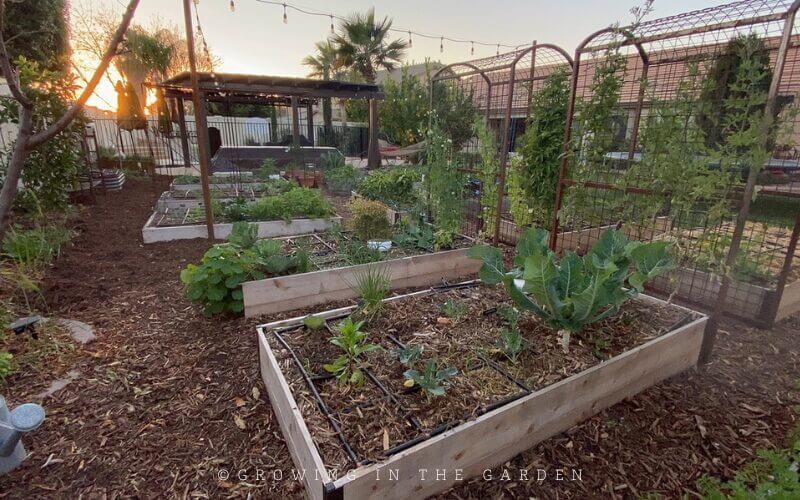
Benefits of Mulching your Garden
1. Mulching your garden helps regulate soil temperature
- Hot soil is hard on plants. Mulch keeps the sun off the soil, so the soil stays cooler. Thick mulch helps insulate it even more.
- Higher soil temperatures slow plant growth, and mulch moderates that temperature.
- Mulch shades the soil from the sun’s direct rays causing less temperature variation.
- During cooler temps, mulch also helps insulate the soil.
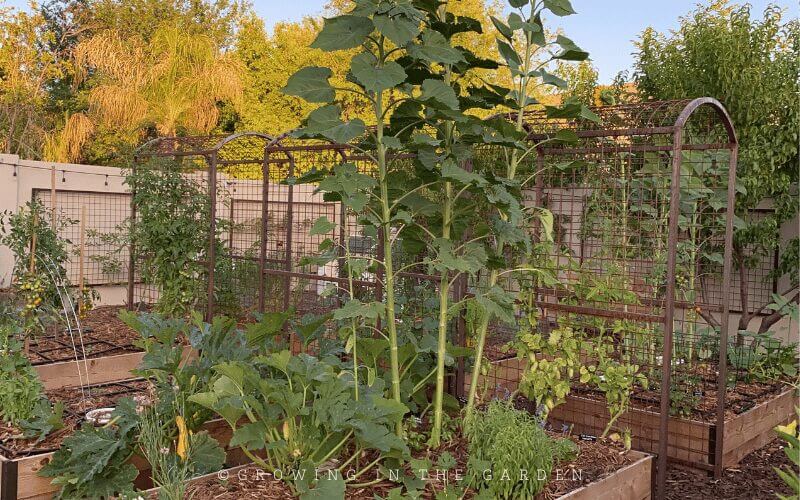

Want to save water and create a gorgeous, eco-friendly landscape? Learn why replacing grass lawns with low-water-use groundcovers is a good idea.
2. Mulching your garden helps slow evaporation
A thick layer of mulch means that less moisture is lost through evaporation. You can then water less frequently, saving water, money, and time!
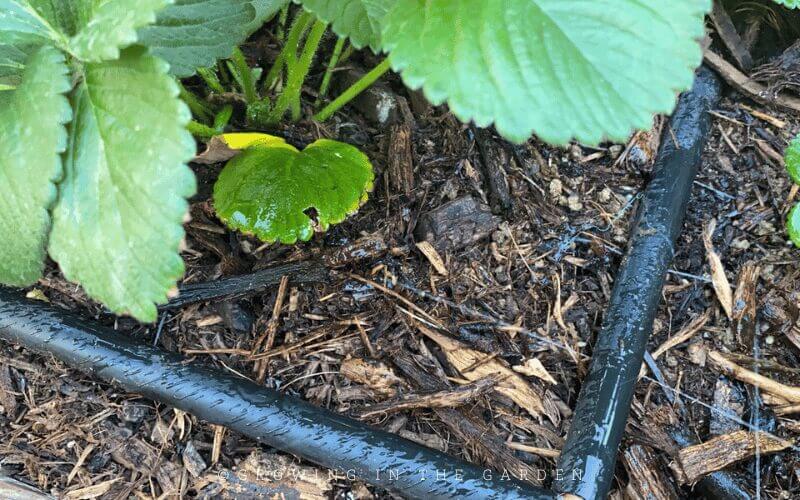
3. Mulching adds organic matter to your garden
When you add natural mulch in the form of bark, straw, or compost, they are incorporated into the soil and add nutrients and organic matter.
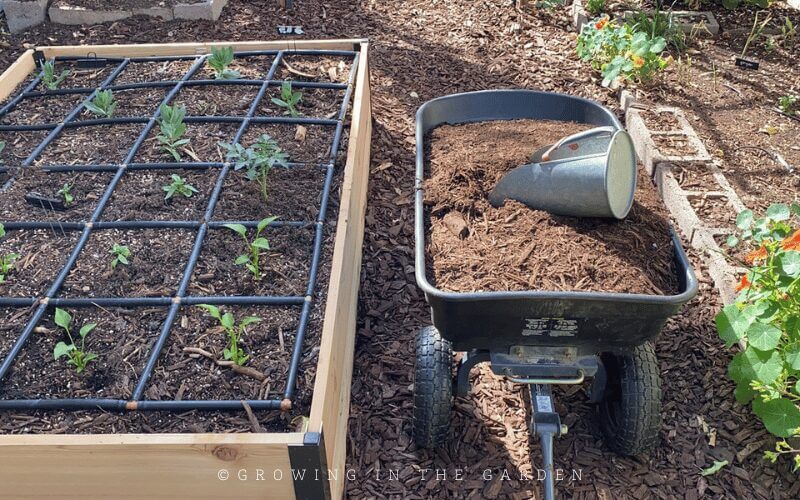
4. Mulching your garden helps prevent and control weeds
Mulching blocks the sunlight needed for weeds to germinate and often smothers existing weeds.
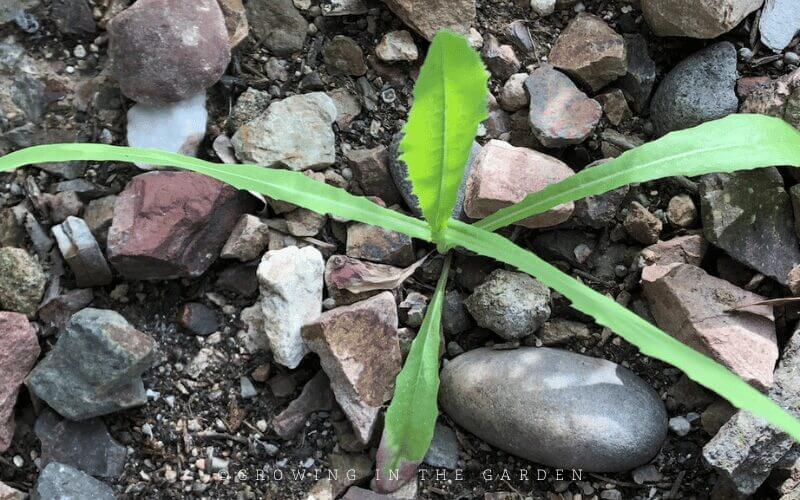
ALL OF THIS TOGETHER MEANS MORE GOOD THINGS GOING ON IN THE SOIL. Increased moisture, fewer temperature fluctuations, and more organic matter lead to more worm activity and more beneficial microorganisms in the soil. That means healthier soil and plants.

Tired of your lawn’s high maintenance and water demands? Consider these low-water-use ground covers as lawn alternatives.
Different Types of Mulch:
Compost
Use homemade, bagged, or bulk compost. Compost is high in nutrients and has a finer texture than other mulching options.

A note about fresh animal manure; it must be aged before using it as mulch or compost in the garden.
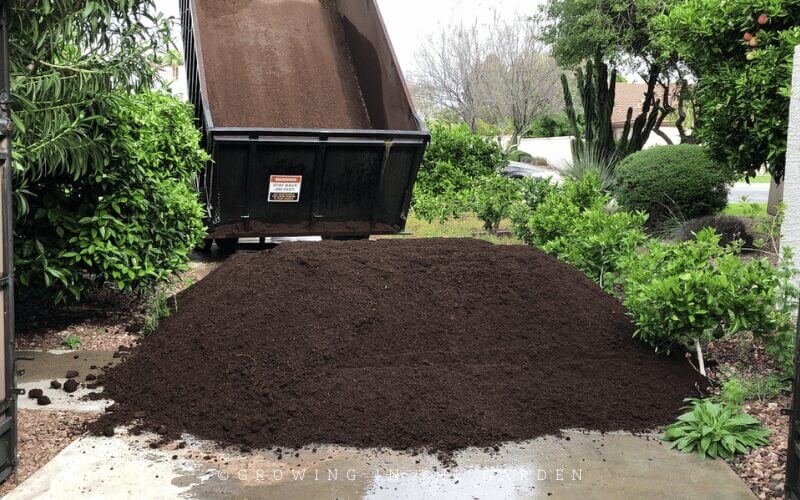
Where to get it: I make my own and I also love the compost from Arizona Worm Farm.
Composted mulch
Larger texture than regular compost. It is typically made from landscape waste and isn’t completely broken down yet.
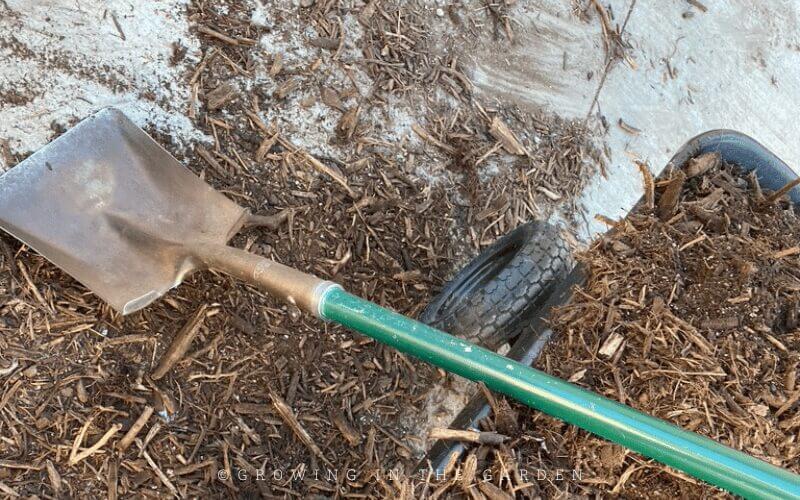
Where to get it: Arizona Worm Farm has this available. They call it mulch or city mulch. I also like the bagged composted mulch from A&P Nursery.
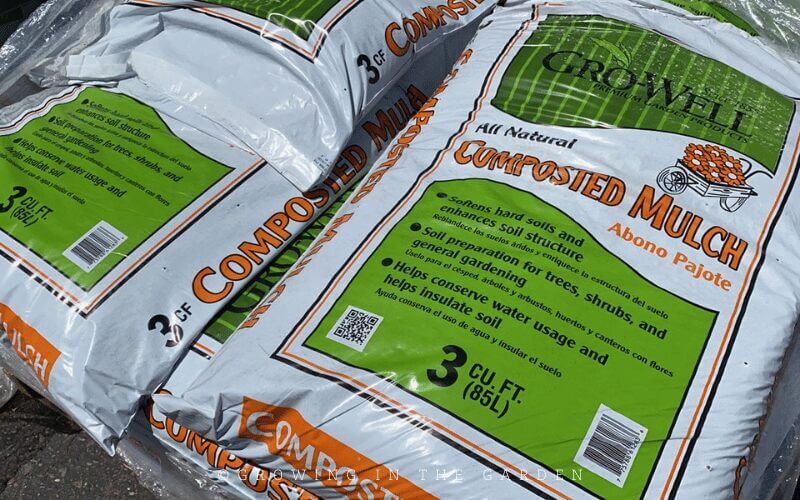
Pine needles
Pine needles are very light, airy, and easy to spread. One nice thing about pine needles is they don’t compact. Use a thick layer (3-4 inches) when using pine needles.
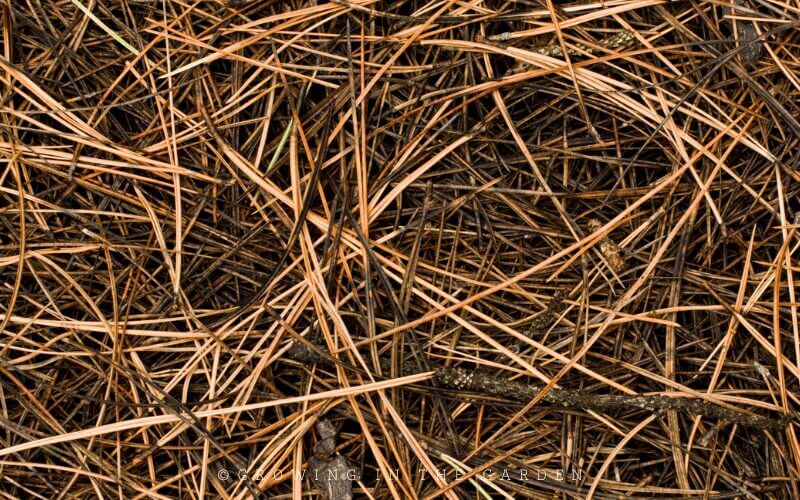
Pine needles may lower the pH of soil when mixed in with the soil. That may not be bad here in the low desert where our soil tends to be more alkaline. Pine needles become more pH neutral as they break down.
Straw (not hay)
(Don’t use hay as it often contains seeds). Straw is the stalk left over after grain, like barley, has been harvested. It is dry and hollow, and there is no nutrition left in it. Use a pesticide-free straw.
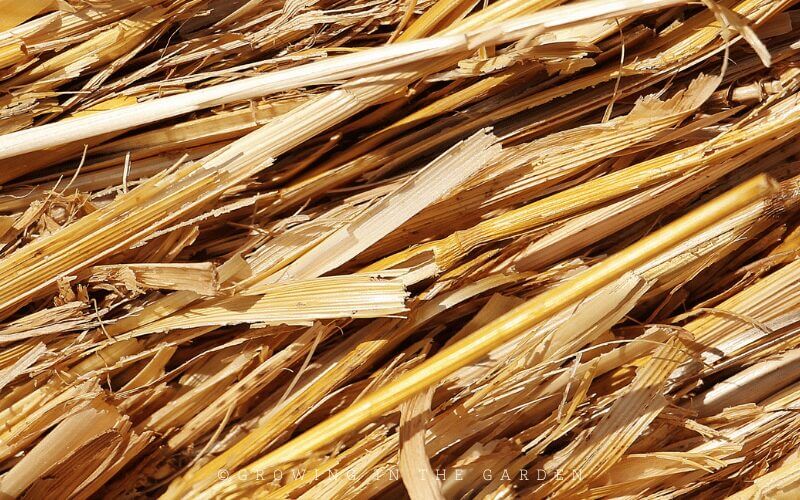
Where to get it: Shopper’s Supply and other farm supply stores.
Leaves / Leaf mold / Shredded leaves
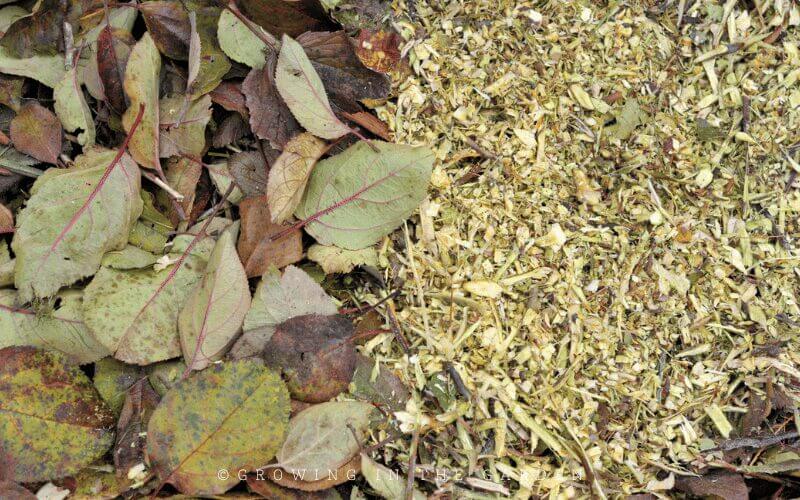
Gather and save all leaves when they fall. Bag leaves and allow them to begin to break down; this creates leaf mold. Use your lawnmower to run over leaves to shred them. Shredded or small leaves are better at allowing water to penetrate and don’t become matted as easily.
Bark / Wood chips
The larger texture of bark and wood chips means they last longer in the garden. They may compete for some nitrogen as the wood chips break down in garden beds.
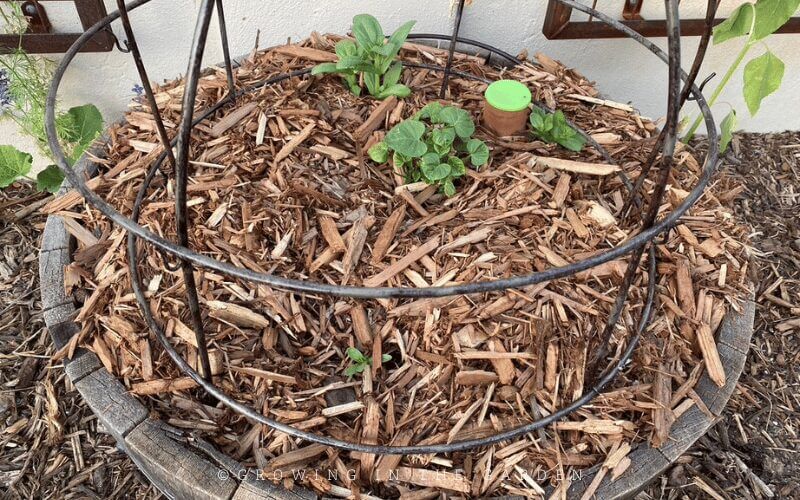
Where to get it: Chipdrop; check with local arborist; Arizona Worm Farm.
Chopped up cover crops / Grass clippings
These options for mulch are full of nutrients. Grow cover crops in beds when they would otherwise be empty. Do not use grass clippings from Bermuda grass or grass treated with chemical fertilizers, pesticides, or herbicides.

In this article, learn more about using cover crops during summer to improve garden soil.
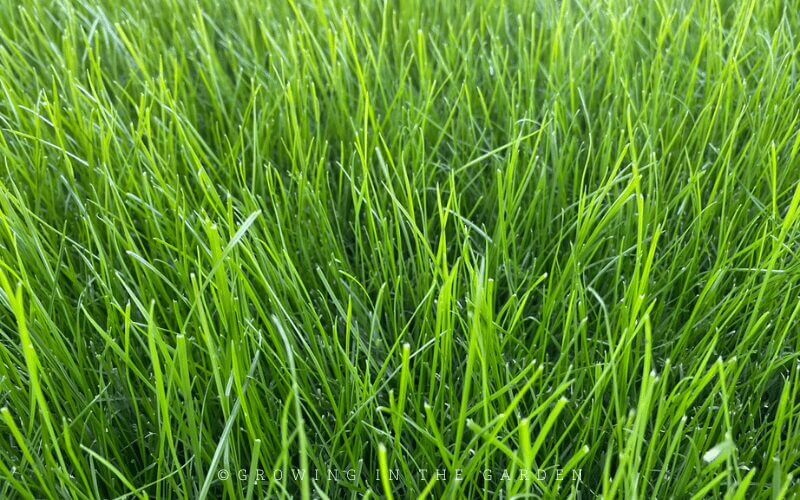

Read this post for more information about how to remove Bermuda grass without chemicals.
Cardboard / Newspaper
Cardboard is often used as sheet mulch under beds and in pathways to help prevent weeds. Spread newspaper in beds, but top with something else like compost or soil to hold it in place.
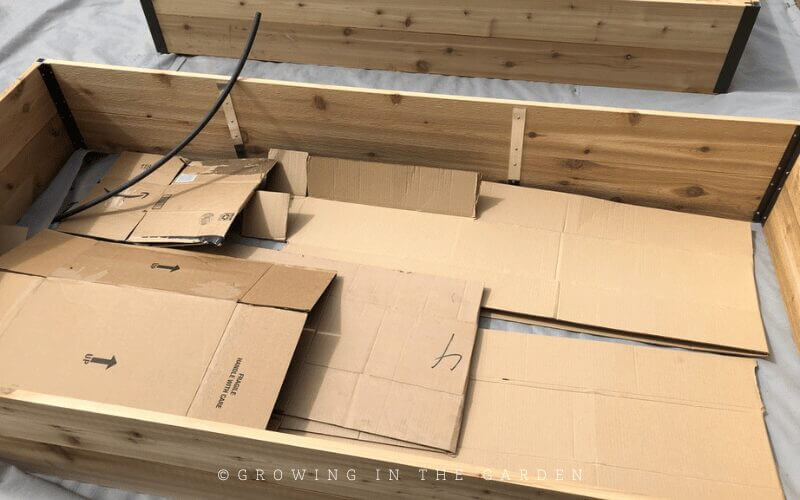
Where to get it: Finally, something to do with all of those Amazon boxes!
Which mulch to use in your garden
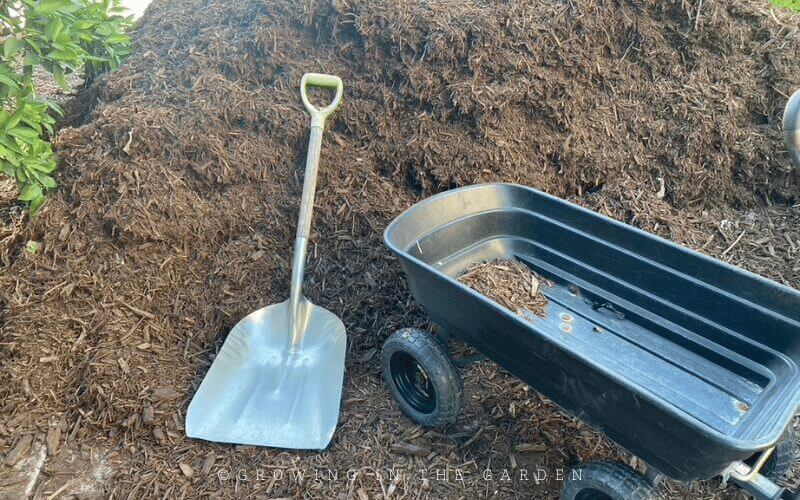
Raised and in-ground garden beds:
Smaller-grade organic materials such as compost, composted mulch, shredded leaves, straw, and smaller wood chips are excellent mulch in raised garden beds.
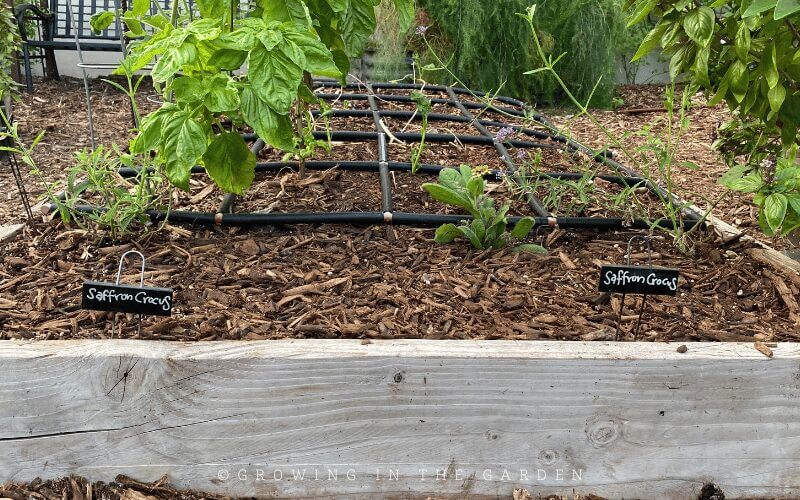
Pathways:
Larger materials last longer in pathways and around raised beds.
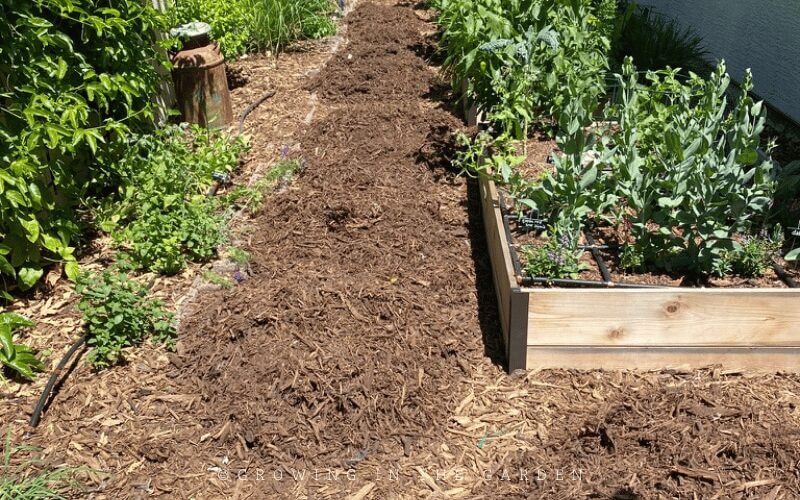
Treewells:
All materials are suitable for around trees, but take care to keep mulch away from the base of the tree.
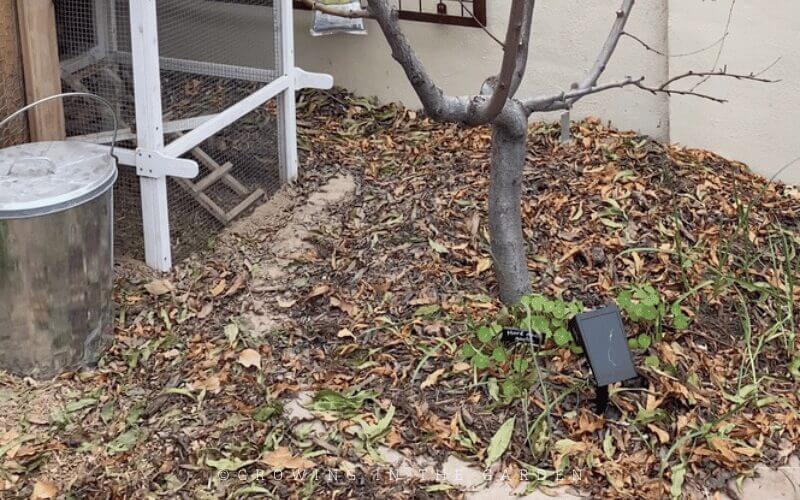
Tips for how to use mulch in your garden
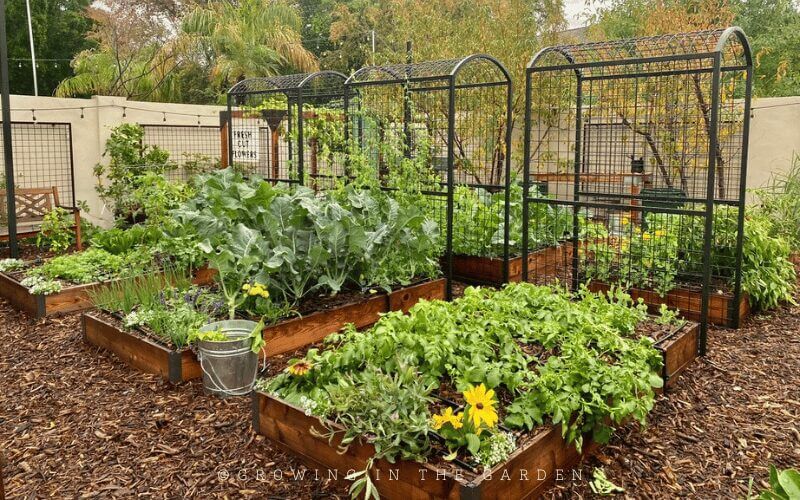
- Wait until plants have grown to several inches tall before applying mulch.
- Keep mulch about an inch away from the stems of plants.
- Add a little extra organic fertilizer below the mulch when using leaves or bark as they can take nitrogen from the soil as they break down.
- If you use Garden Grids for watering like I do, put them on top of the mulch. You may have to water a little longer to penetrate the mulch layer.
- Plan on applying mulch twice a year in the spring after planting (before the heat of summer), and again after fall planting.
- Apply a 2-3 inch layer of most mulches. Less than 2 inches doesn’t give you all the benefits, but a larger layer can be difficult for water to penetrate.
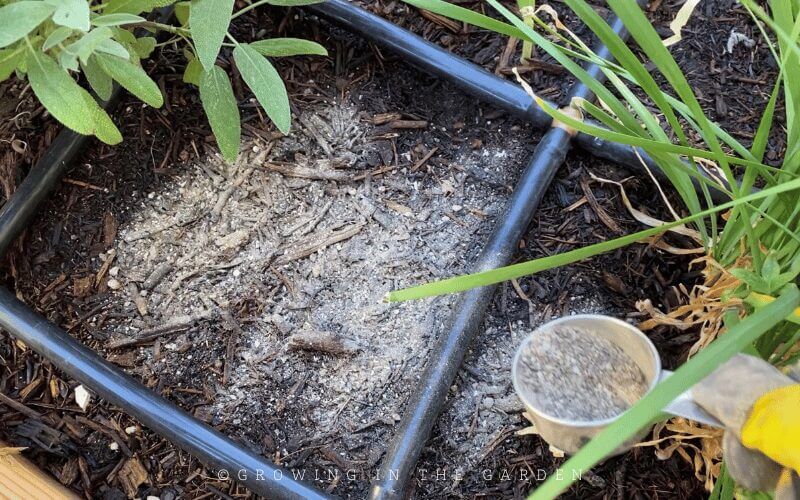
If this post about mulching your garden was helpful, please share it:
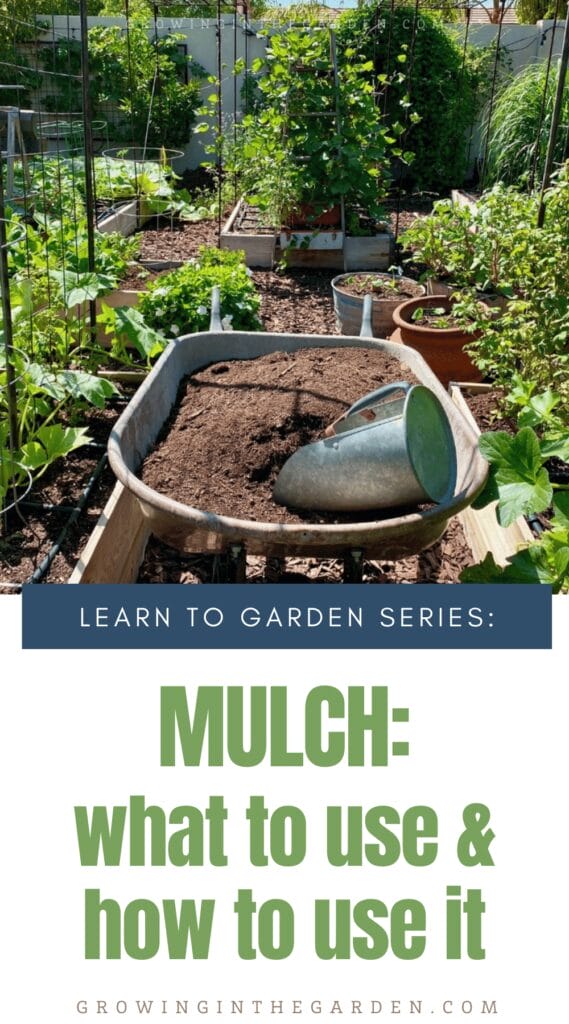
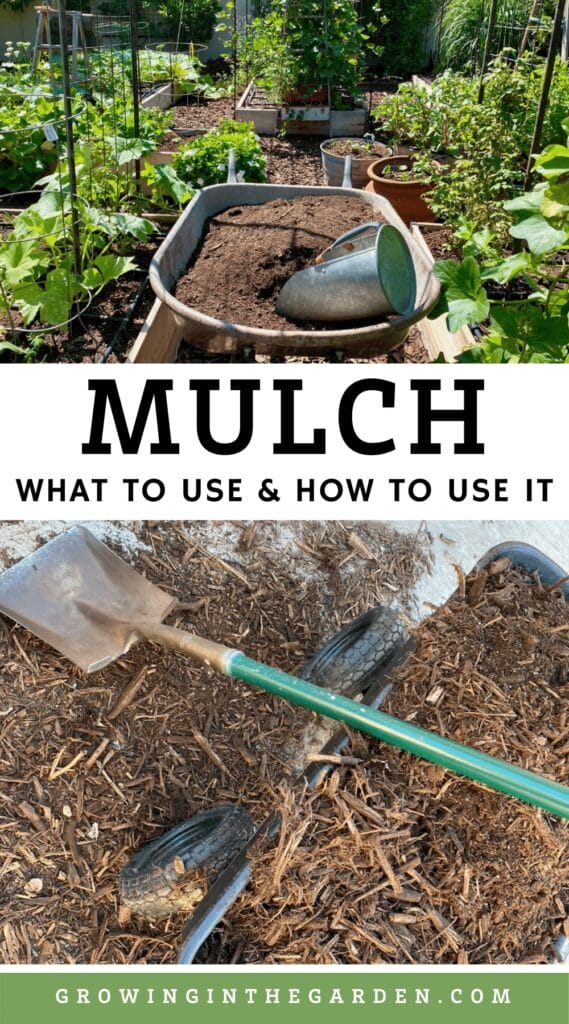
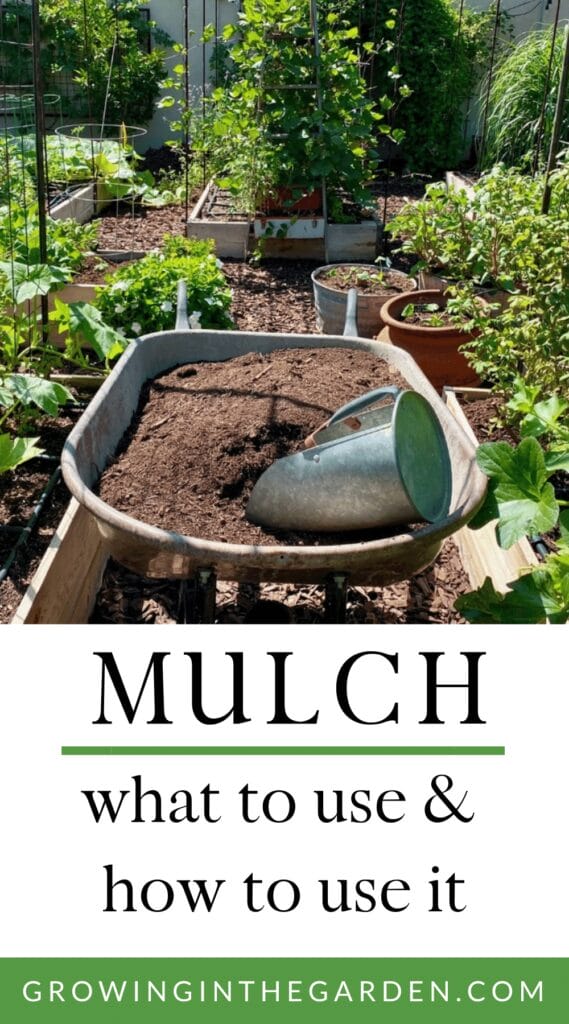





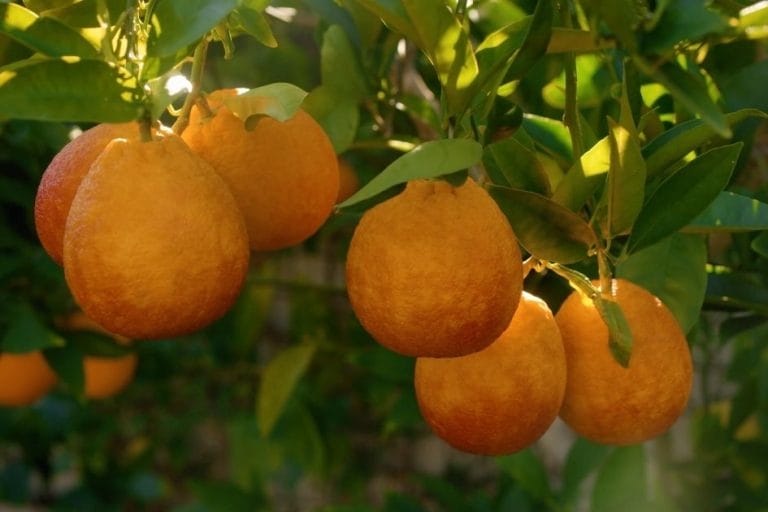
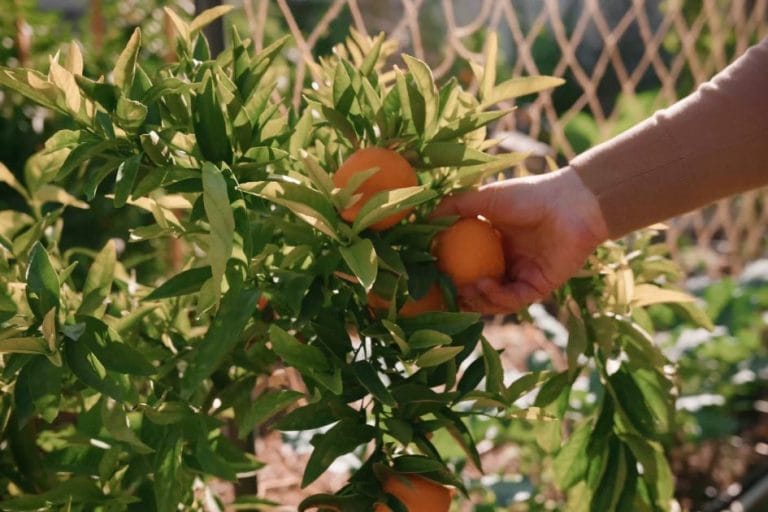
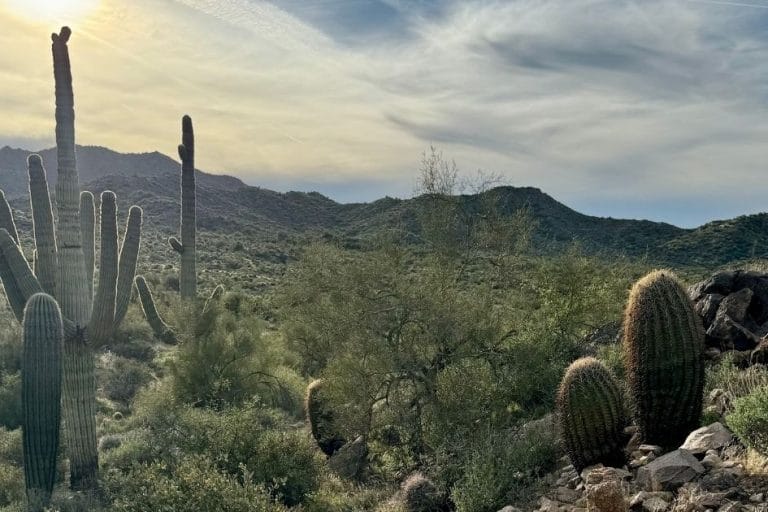
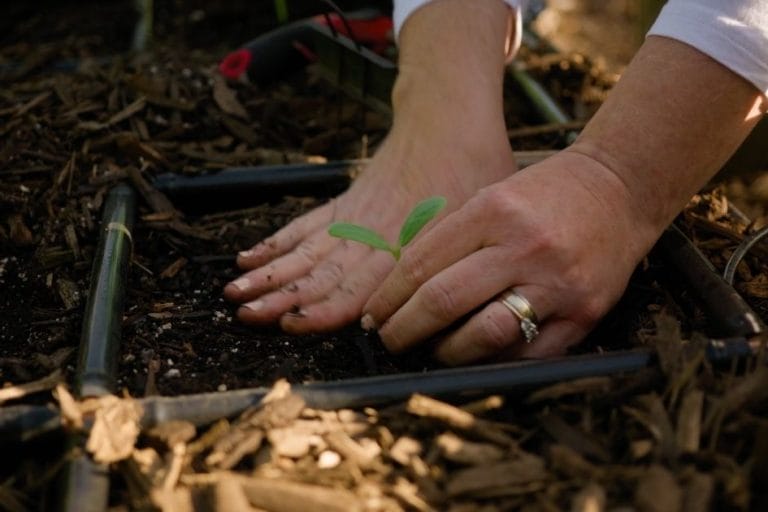
It looks like you have a feed scoop in the wheelbarrow in the first photo – can you please share which one it is and where you got it? Thanks
I got mine at an antique store years ago, but this is a similar one on Armazon. https://amzn.to/3wfWEgc
If we shouldnt put mulch down until the plants are a few inches tall, then what do you suggest forkeeping soil moist if I am direct seeding during the summer?
You may want to go ahead and apply the mulch when you are seeding – maybe thin it out a bit around the seedling as it emerges.
Can mulching the entire yard area like you have done attract termites? We paid a lot to get rid of an infestation. I’d hate to have to go through that again.
Possibly. If you have had a problem in the past, I would check with the exterminator that helped you previously.
For a truck load of mulch for$30, check out Tempe AZ recycled compost.
Should mulch in garden beds be removed before preparing the beds before planting? Should I mix it into the soil? I use small pieces of bark from chip drop.
Thank you!
I use wood chips as well. If you can, pull back (or remove) the wood chip mulch before adding more compost, etc. Then put the mulch back on top.
Have you found a favorite mulch/cover? It seems from your posts and videos you use straw but I also see wood chips. Do you have a specific plan or reason for using one or the other?
Hi Michael – I use wood chip mulch for the most part. For some of the lighter crops like carrots I use a lightweight straw https://collabs.shop/mhecuh